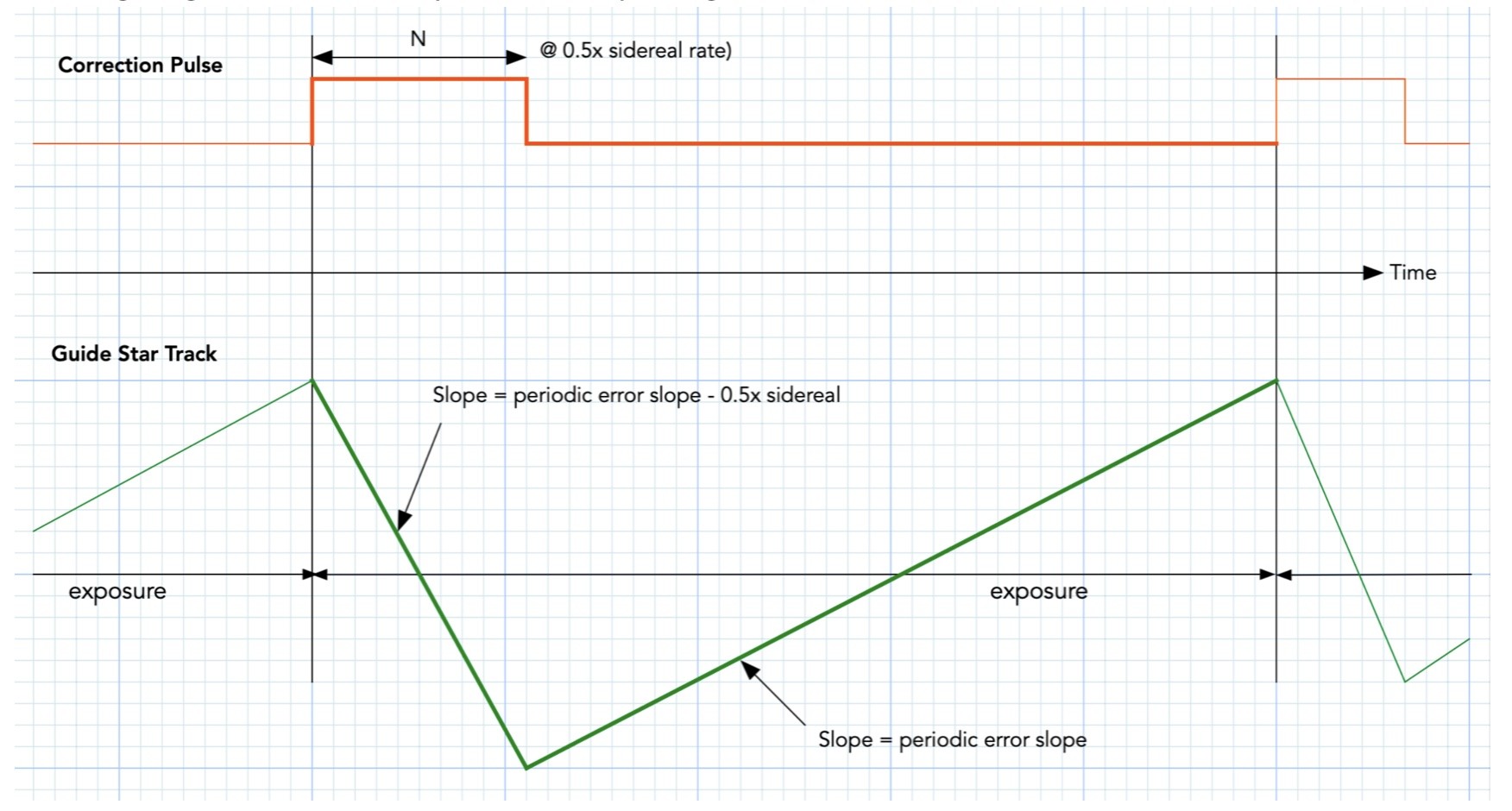StarzLite The magnitude of the accumulative peak when several of the harmonics all cycle in to sync is impressive.
Yep Dave, I had also seen that and written this in the white paper (of course, a little bit more "math jargon" than what I would post on this forum :-):
Notice that the derivative has an "N" term in the multiplying factor. I.e., the firth harmonic term creates 5 times the problem from the fundamental. Fortunately, the fifth harmonic distortion of most gears are also down by a lot -- it is up to QC to reject the high harmonic content ones (everything boils down to QC).
Here is a close up look at the dynamics of one guide frame that has a single pulse per exposure:

In the part shown here, the periodic error always exert a positive "pressure," even when there is a pulse. The pulse just happens to have a much larger negative slope (of the order of 7.5 arcsec/sec, vs the periodic error (of the order of 0.1 to 1 arcsec/sec).
When the pulse is running, the actual telecope is moved downwards (in this case) at a slope of the slope of the periodic error - the slope of the guide rate (7.5 arcsec/sec). Once you let the foot off the pulse, the telescope now moves again at its periodic error rate, for the rest of the exposure frame.
Notice that the guide star is also making the identical movement. I.e., during a 1 second exposure, the guide star will move up and down between 0.1 and 1 arcsec (so the centroid computing part had better be ready to handle that). For a 0.5 second exposure, the problem is halved. Thus the need to use the shortest exposure possible.
At some point, you can no longer use shorter exposures (unless you use larger aperture guide scopes). But here is where the N-pulse per exposure come in. Instead of ptting all the correction above at the start, we apply only half of it at the beginning, and apply a second one at the center of that exposure. The sawtooth doubles in frequency, while the sawtooth amplitude halves! If the slope does not change that rapidly (I have the also shown the second derivative in my white paper to show that it is indeed small) this is equivalent to halving the exposure time, without having to actually shorten the exposure time.
Even better, use 4 pulses, or 8 pulses, etc. Each doubnling of pulses will half the amplitude of the corrected curve.
The penultimate solution is to use a single pulse, whose durration is the same as the exposure time, and whose slope is the exact opposite of the mount's slope! The amplitude of that green curve above collapses to zero (or somehing that is very small). That makes a strain wave mount as smooth as any worm geared one. Not all mount protocols can do that (control the guide rate to such fine grain). My RST-135 can control the guide rate from 0.01 x sidereal rate to 0.99 x sidereal rate, so I have at least something to experiment with in the future.
FWIW, I have been using a Borg 55FL objective (55mm aperture,250 mm focal length) as my guide scope. Seems adequate for use with a camera like the ASI178MM for 1/2 second exposures. But if I can go to multiple pulses, I can perhaps start using 1 second or 2 second guide exposures and move back to as smaller, say 40 mm guide scope.
Chen